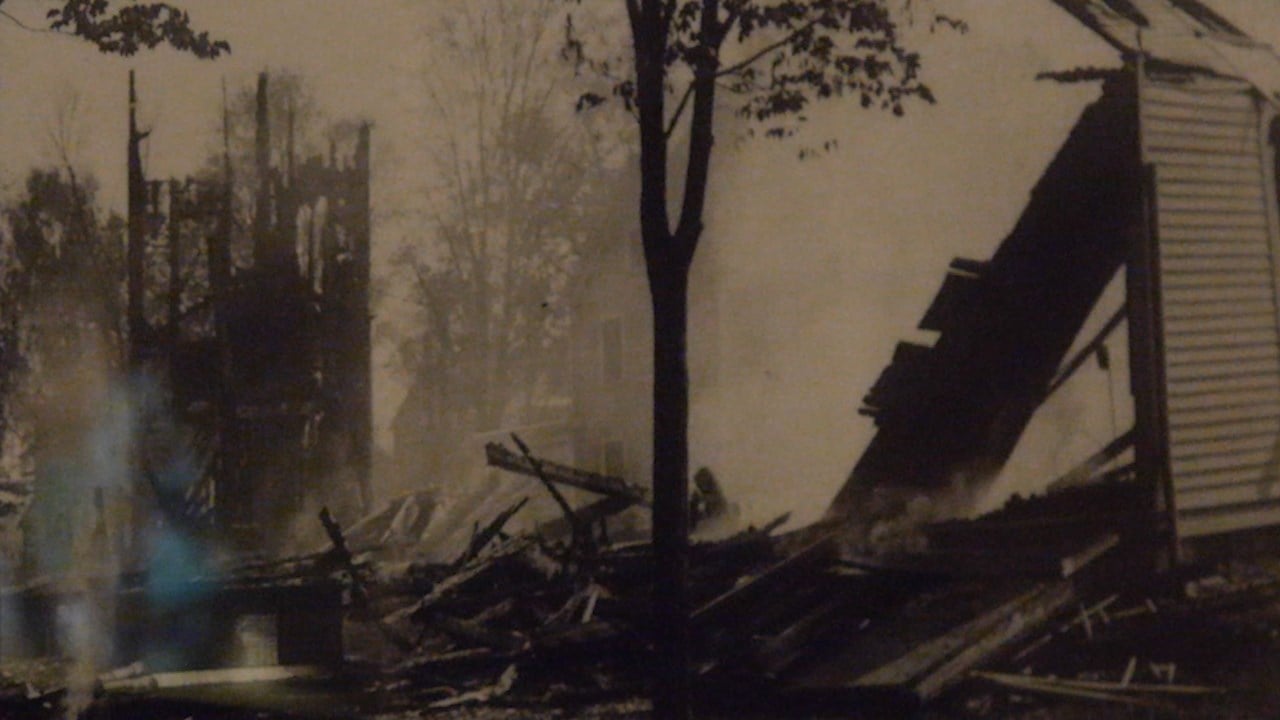Union Presbyterian Church: An Eventful 200 Years
It's one of the oldest churches in Broome County and this year the Union Presbyterian Church is celebrating its bicentennial. The past 200 years have been eventful to say the least.

Union Presbyterian Church on Main Street in Endicott is celebrating 200 years.
When I arrive at the stone church on the corner of Main and Liberty Streets in Endicott, Pastor Patricia Raube takes me up to the church's museum. Most churches don't have a museum on site dedicated to their own history, but for the Union Presbyterian Church, there's just that much to keep track of. They've had four buildings, two locations, a malaria outbreak, a fire, and a connection to espionage. Let's start from the beginning.
"Not long after the country was founded, a small group of people in this area decided to start a church," says Raube. That was in 1791. "They built a small log cabin in what is now Riverside Cemetery. Historical records say 'on the knoll.'"
That first church was a Dutch Reform and it didn't last long. Historical records blame a lack of funds and a malaria outbreak. In 1819, the founders tried again. This time incorporating a religious society that they called "The First Presbyterian Society in the Town of Union." On that list of original founders, were the Mersereau brothers. You may recognize that name from Mersereau Park on Mersereau Ave, and, if you don't, I'm sure you have heard of their former boss.
"They actually spied for Washington in New York City during the Revolutionary War," says Raube.
Brothers John and Joshua and Joshua's two sons (also named John and Joshua) formed the Mersereau Spy Ring, the first American spy organization, predating the more famous Culper Ring. The Mersereaus are actually credited with making sure the British couldn't follow George Washington across the Delaware River.
"They found two Durham boats sunk with rocks and hidden underwater," says Ted Warner, Vice President of the Old Village of Union Historical Society.
The fourth great grandchild of the elder John Mersereau, Warner grew up hearing the story.
"They raised them up and destroyed the boats so that the British couldn't follow them," says Warner.
25 days later, Washing would cross the Delaware again. As Warner puts it, this time was "the famous time," that was immortalized in Emanuel Leutze's painting of the event.

Washing Crossing The Delaware is in the public domain. Digital copy courtesy of the American Metropolitan Museum of Art.
The brothers are buried in Riverside Cemetery and their descendents would stay connected to the church they founded. The name is found on several of the stained glass windows inside the sanctuary.

The sanctuary inside the Union Presbyterian Church.
Although a mainstay, the church has undergone several changes throughout the years. First, in 1822, a larger building replaced the log cabin in Riverside Cemetery. Then, in 1871, it moved around the corner into an even bigger structure on Main Street.
"They were happily in that building until 1906 when it was struck by lightning and burned to the ground," says Raube.
With that, Raube laughs, acknowledging the irony of lightning taking down a church with a good natured "I know!"

The Union Presbyterian Church burned to the ground in 1906 when lightning struck the steeple.
"I don't know of any theological reason why it got struck by lightning," Raube laughs again, "But clearly the community must have really rallied together to get it built again so quickly."
They built the current stone church in only ten months. The building opened its doors in March 1907.

Stained glass windows inside the Union Presbyterian Church. Many bear the Mersereau name.
It's been an eventful 200 years and the church is celebrating that milestone with a series of events and efforts throughout the year.
"So, we're looking back, but we're also looking at the ways we can serve the community now and into the future," says Raube.
A full listing of bicentennial events can be found on the church's website.

